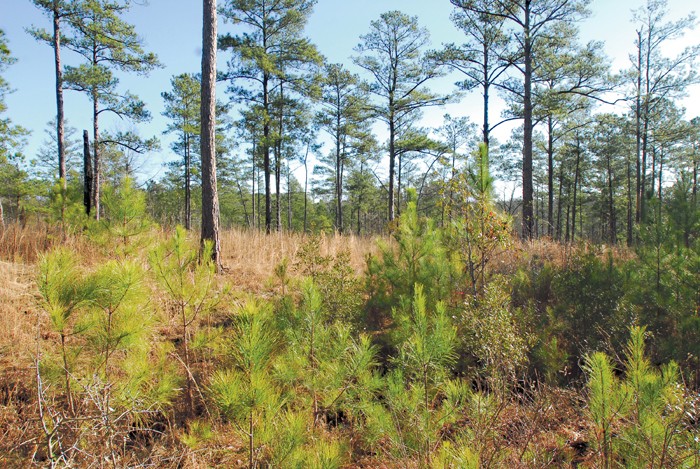FORT BENNING. Ga. - As land outside of Fort Benning makes way for more houses and businesses, conflicts over noise, smoke, lights and radio signal interference increases. The result is encroachment that could interfere with the post's training mission. A 7,000-acre buffer surrounds parts of Fort Benning, providing a cushion that addresses encroachment and helps conservation efforts. This land - part of the Army Compatible Use Buffer - can't be used for training and is not owned by Fort Benning, but it does help the installation continue its mission.
"It creates a zone adjacent to strategic parts of Fort Benning's boundary where it becomes far less likely that residential or commercial development would result in land use not compatible to nearby military training or land management, in particular noise, smoke from prescribed fires, low-flying aircraft," said Wade Harrison, director of The Nature Conservancy's Chattahoochee Fall Line program.
TNC, in partnership with Fort Benning, administers the ACUB program at the installation.
ACUB was created by the Department of Defense in 2005 to address encroachment and fund conservation efforts Armywide. ACUB builds upon previous DoD conservation efforts and the defense authorization bill of 2003, which created a "buffering authority." Military installations partner with third parties, such as state and local land trusts or conservation funds to help implement buffering programs.
The conservancy works to purchase ACUB easements or properties from willing landowners. Fort Benning's priority is to channel land development away from critical portions of the installation boundary and protect endangered species habitats off post, said John Brent, chief of the Directorate of Public Works' Environmental Management Division.
Brent said ACUB helps with the installation's environmental stewardship responsibilities by protecting not just land, but water.
"In our priority areas, many of our ACUB properties are at the head waters of streams coming through Fort Benning ... by protecting over development of those areas we are helping (water quality)," said Brent, citing the Upatoi River which originates northeast of Fort Benning.
TNC offers incentives for landowners to include, tax breaks through conservation easements.
"The idea is for the property to remain largely in a natural state," Harrison said.
In many cases, landowners continue to own and live on their land.
"The landowner can continue owning, enjoying and managing their land. But if they are willing to give up some flexibility for instance, not to subdivide or develop their land, they can be compensated through tax incentives or purchase of development rights. And the degree to which this happens is always negotiable," Harrison said.
TNC also purchases some lands outright. In the future those lands may be sold to landowners interested in maintaining conservation efforts on the property, he said.
Currently, TNC is focused on creating buffers along the "hotter" areas of northeastern Fort Benning. The number of acres composing the buffer around Fort Benning is poised to jump dramatically in 2011, Harrison said.
The buffer helps Fort Benning with its commitment to habitat restoration for rare species such as the red-cockaded woodpecker and the gopher tortoise. The buffer also benefits communities by providing a barrier to noise, smoke and other interference.
"It's in everyone's interest not to have metro Columbus jammed up against parts of Fort Benning," Harrison said. "If the land is encumbered from that kind of development, it's great for the habitat and quality of life here."


Social Sharing